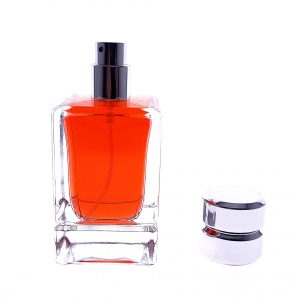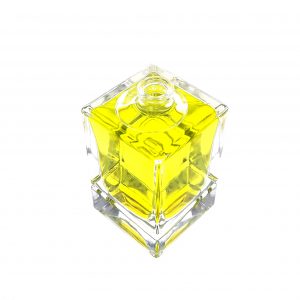There are many steps in the process of producing glass bottles, and we can talk about them today.
The glass production process includes: batching, melting, forming, annealing and other processes. They are introduced as follows:
1 Ingredients, according to the design of a good material formula, the various raw materials are weighed and mixed in a mixer. The main raw materials of glass are: quartz sand, feldspar, limestone, soda ash, boric acid and so on.
2Melting system, which heats well-equipped raw materials at high temperature to form uniform and bubble-free glass. This is a very complex physical and chemical reaction process. The melting of the glass takes place in the furnace. There are two main types of melting furnaces: one is a crucible kiln, and the glass material is in the crucible. The small crucible kiln only puts one crucible, and the large one can exceed 20 crucibles. Crucible kiln is a kind of intermittent production, and now only optical glass and colored glass are used in the production of crucible kiln. The other is a retort furnace, in which the glass material is smelted in the molten pool, and an open flame is heated on the upper part of the glass surface. The melting temperature of glass is mostly between 1600°C and 1300°C. Flame heating, heating with a small amount of electric current, is called electric melting furnace. At present, the pond is a continuous production kiln. The small pond kiln can be a few meters, and the largest can reach more than 400 meters.
3 Forming is to melt a good glass liquid into a solid product with a fixed shape. The forming must be carried out within a certain temperature range. This is a cooling process. The glass is first transformed into a viscous liquid plastic state, and then transformed into a brittle solid. Forming methods can be divided into two categories: artificial forming and mechanical forming.
Glass bottle
(1) Artificial forming. Using a nickel-chromium alloy tube, select the glass in the mold while blowing on the side. Mainly used to form glass bubbles, bottles, balls (using spectacle lenses), etc. (2) Blowing, other workers use top rods, and blowing it on both sides is mainly used to make glass tubes or rods. (3) Suppress, select a group of glass, cut it with scissors, make it fall into the concave mold, and then a convex mold. Mainly used for forming cups, plates, etc. (4) Freely shape, use pliers to take materials, and use scissors, pliers and other tools to directly make crafts.
Mechanical forming. Due to its high strength, high temperature, and poor conditions, most of it has been replaced by mechanical forming except for free forming. In addition to mechanical forming, pressing, blowing, drawing, (1) rolling methods, used to produce flat glass, thick cut glass, glass wire, etc. (2) Casting method, production of optical glass. (3) The centrifugal casting method produces large-diameter glass tubes, containers and large-capacity reaction tanks. This is when the glass melt enters the high-speed rotating mold. Due to the centrifugal force, the glass approaches the mold wall, and the rotation continues until the glass hardens. (4) Sintering process for producing foam glass. It is a foaming agent is added to glass powder, and a large number of closed bubbles are formed in the glass during the heating process in the metal mold covered by heating. This is a good heat insulation material for heat and sound insulation. In addition, the formation of flat glass includes vertical lead method, flat method and float method. Float is a method of forming flat glass on the surface of molten metal (tin) where the glass flows. Its main advantages are high-quality glass (smooth), drawing speed, and large output.
4 Annealing, the glass has been subjected to strong temperature changes and shape changes during the forming process, and this change leaves thermal stress in the glass. Such thermal stress will reduce the strength and thermal stability of the glass product. If it is directly cooled, it is likely to be self-rupture (commonly known as cold glass) during the cooling process or after storage, during transportation and use. In order to eliminate the phenomenon of cold explosion, glass products must be annealed after molding. Annealing is a period of time to eliminate or reduce the allowable value of thermal stress in the glass within a certain temperature range.
In addition, some glass products can be processed to increase their strength. Including: physical hardening (quenching), thick glass, glass, automobile windshield, etc., and chemical (ion exchange), used for watch cover glass, air glass, etc. The principle of stiffness is to generate compressive stress on the surface layer of the glass to increase its strength.








